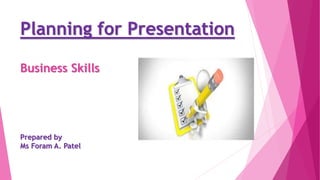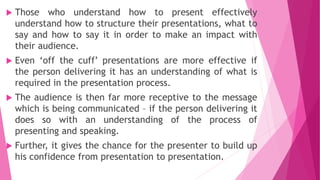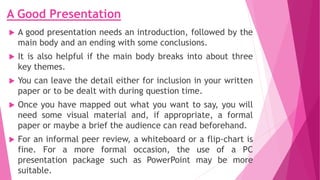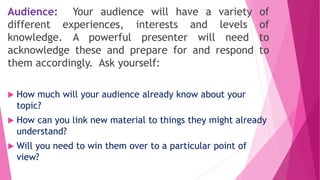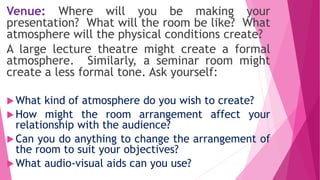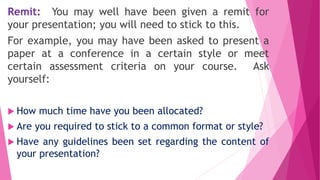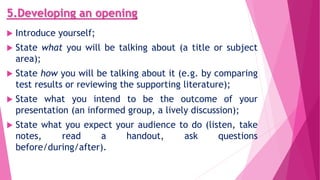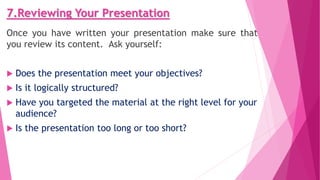The document provides guidance on how to effectively plan a presentation. It discusses 7 key stages: 1) preparing objectives and understanding your audience and venue, 2) choosing 3 main points, 3) selecting supporting evidence, 4) linking points, 5) developing an introduction, 6) crafting a conclusion, and 7) reviewing the presentation. The stages ensure the presentation has a clear structure, logically flows from point to point, and meets the needs of the audience.
